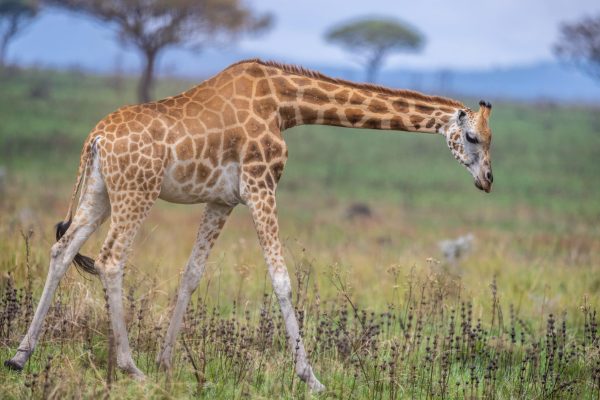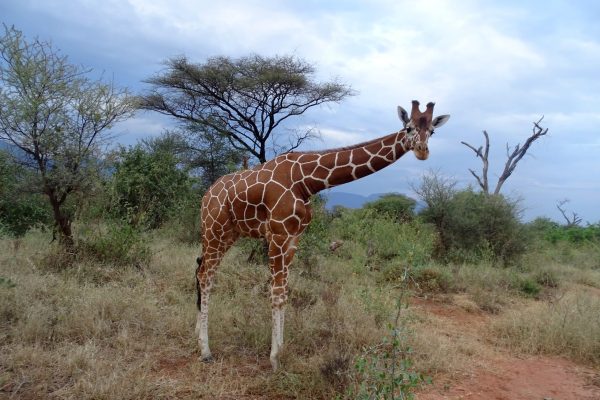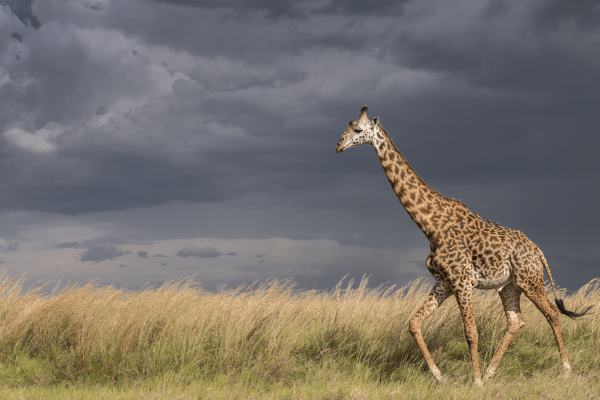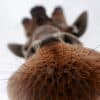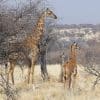Giraffe reveal stunning genetic diversity
This underlines the urgent need for increased conservation before it is too late.
Giraffe numbers in Africa have dropped significantly in the last 35 years and latest estimates by the Giraffe Conservation Foundation (GCF) estimate their numbers at only 117,000 animals in the wild. This means that there is only one giraffe for every four elephant remaining in Africa. This rather perturbing situation is exacerbated by the recent understanding that there are four distinct species of giraffe and not only one as previously thought.
Alarmed by this rapid decline and a lack of understanding of many aspects of giraffe and their ecology in the wild, the Giraffe Conservation Foundation (GCF) and the Senckenberg Biodiversity and Climate Research Centre together with field partners from the Kenya Wildlife Service and the San Diego Zoo Wildlife Alliance embarked on an ambitious collaborative whole genome-study in Kenya.
Three of the four giraffe species occur in Kenya: Nubian (G. camelopardalis camelopardalis), reticulated (G. reticulata), and Masai giraffe (G. tippelskirchi tippelskirchi). While their habitats are now rather distinct and different species rarely encounter each other, historically they clearly overlapped. Scientists have long proposed that giraffe, in particular those living in key geographic border areas in Kenya, may have hybridized. While interbreeding between different giraffe species in captivity (zoos) is well documented, there are only anecdotal reports of natural hybrids in the wild and these have never been confirmed in a scientific study.
This first genomic-wide study now shows that while it is in theory possible for different giraffe species to interbreed, they simply do not in the wild, even if they are geographically in proximity like in Kenya. While the exact reasons are still unknown, the data shows that their selection for specific behaviours or certain isolating mechanisms prevents them from interbreeding. This so-called ‘reproductive isolation’ further supports the previous findings, which were the foundation for recognising four distinct species (Coimbra et al. 2021; Winter et al. 2018; Fennessy et al. 2016).
The new study analysed 128 genomes of wild giraffe, including 113 deliberately sequenced from individuals in Kenya, and found limited levels of Nubian giraffe ancestry in a few reticulated giraffe individuals (but not others) that were sampled from the Laikipia Plateau in northern Kenya. These results only reflect a historical gene flow between these two lineages.
Furthermore, the genetic findings highlight that effective giraffe population sizes in Kenya have declined since the Late Pleistocene (>11,700 to 129,000 years ago). This decline was most severe for Nubian and reticulated giraffe. Such findings highlight the urgent need for increased giraffe conservation efforts in Kenya and throughout their range on the African continent.
Images below: Nubian, reticulated and Masai giraffe
Prof. Dr. Axel Janke from the Senckenberg Biodiversity and Climate Research Centre added that: “Despite historically hybridizing, genome analyses of the 128 individuals show that no contemporary gene flow between these three giraffe species has occurred. Kenya is a melting – not a mixing! – pot for these giraffe.”
The implications of this and previous studies are far reaching for giraffe conservation and management in the wild. In 2016 giraffe as a single species were uplisted from Least Concern to Vulnerable on the IUCN Red List of Threatened Species. As a critical indicator of the health of the world’s biodiversity, the IUCN Red List is a powerful tool to inform and catalyse action for biodiversity conservation and policy change. With recent findings that there are indeed four distinct species of giraffe, this has significant implications for managing their biodiversity, especially when considering that likely three of the four species of giraffe would be listed as Critically Endangered or Endangered. It is urgent time to give a voice to their silent extinction.
Findings from this study should also highlight the need to re-evaluate the status of giraffe on international treaties, particularly the Convention on the Conservation of Migratory Species of Wild Animals (CMS) and Convention on International Trade in Endangered Species of Wild Fauna and Flora (CITES), which both added giraffe as a single species to Appendix II in 2018 and 2019, respectively.
“This first genome-scale assessment of hybridization among East Africa’s giraffe lineages will aid in redefining their taxonomic status on the IUCN Red List and other international conventions. A re-assessment is critical for their conservation. We cannot continue to throw all giraffe into one basket, so to speak. They are genetically different, and it is about time that each unique giraffe species gets the attention they deserve, so we can secure their survival in the wild,” says Dr Julian Fennessy, Director of Conservation at GCF. “The outdated taxonomic classification used by the IUCN Species Survival Commission has a direct negative effect on giraffe conservation efforts in Africa. It is important that we give each giraffe species the level of protection they deserve. This is the only way we can save them – before it is too late!”
Citation
Coimbra RTF, Winter S, Muneza A, Fennessy S, Otiende M, Mijele D, Masiaine S, Stacy-Dawes J, Fennessy J & Janke A. Genomic analysis reveals limited hybridization among three giraffe species in Kenya. BMC Biol 21, 215 (2023). https://doi.org/10.1186/s12915-023-01722-y


